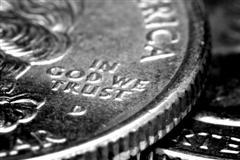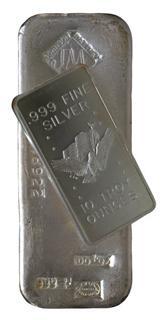| Home | About | Archives | RSS Feed |

@theMarket: Better Days Ahead
 After this week you should have either an upset stomach, stress headache or both. Human beings do not do well in markets that climb up and down by over a percent on a daily basis. Unfortunately, as this market bottoms, we may expect more of the same.
After this week you should have either an upset stomach, stress headache or both. Human beings do not do well in markets that climb up and down by over a percent on a daily basis. Unfortunately, as this market bottoms, we may expect more of the same.
On the plus side, the Greek Prime Minister George Papandreou received a parliamentary vote of confidence this week. Yet, facing investors this week is a vote on the passage of the austerity plan that the European Community demands in exchange for bailout money.
Economic data continues to disappoint with the latest unemployment figures coming in more than expected. Wherever you look, gloom and doom pervades the minds and hearts of investors. On Wednesday, Fed chief Ben Bernanke didn't help by reducing the Fed's estimate for GDP growth in the second quarter from 3.1-3.3 percent to 2.7-2.9 percent. Even a 5 percent decline in oil was viewed as negative and simply another proof that the economy is faltering.
Most investors missed the point of Thursday's release of 60 million barrels of crude from the world's strategic oil supply. Pundits complained that it was too little to impact demand since it amounted to less than a day's supply of global demand. Others argued it was an act of desperation by an administration that has run out of ideas to stimulate the economy.
It was none of the above, in my opinion. Readers may recall that a few weeks ago prices of most commodities peaked after the CME raised margin requirements for everything from energy to silver. Speculators, who had bid commodity prices up to astronomical levels, abandoned the market in droves causing prices to decline to their present levels.
Most energy experts believe that the fundamental price where supply and demand for oil are in balance is closer to $85 in barrel. But notice oil, until this week it was still trading at $100 a barrel and above, (although down from its recent peak of $112 a barrel). Clearly, there were still a lot of speculators in the market, who could go either way. It was a tipping point where there was at least a 50/50 chance that traders might try and take the price higher once more.
To me, the International Energy Agency exhibited perfect timing. With a relatively small amount of released oil, they managed to drop the price of crude by $5 a barrel and send the speculators running for the hills. It has also added another element of risk since nervous traders will now have to be looking over their shoulder in case the IEA does it again.
As for the wall of worries that beset the market, all this pessimism is part of the normal process one expects as the averages descend to a level where buyers once again appear. Today we are probably within 1-2 percent of that area, if we are not already there. To me, the math is simple: a possible 50-point decline in the weeks ahead on the S&P 500 Index versus 150-200 points of upside. The risk/reward ratio tells me to not only hold the course but to buy on weakness.
Bill Schmick is an independent investor with Berkshire Money Management. (See "About" for more information.) None of the information presented in any of these articles is intended to be and should not be construed as an endorsement of BMM or a solicitation to become a client of BMM. The reader should not assume that any strategies, or specific investments discussed are employed, bought, sold or held by BMM. Direct your inquiries to Bill at (toll free) or e-mail him at wschmick@fairpoint.net. Visit www.afewdollarsmore.com for more of Bill's insights.
| Tags: silver, oil, commodities, Greece |
The Independent Investor: A Windfall in Disguise?
 It started last week with a 25 percent plunge in silver prices. Gold, oil, corn, and coffee followed in sympathy, and by the end of the week it was a full-scale route across the commodity spectrum. These price declines will save corporations and consumers untold trillions of dollars. So why isn't the stock market celebrating?
It started last week with a 25 percent plunge in silver prices. Gold, oil, corn, and coffee followed in sympathy, and by the end of the week it was a full-scale route across the commodity spectrum. These price declines will save corporations and consumers untold trillions of dollars. So why isn't the stock market celebrating?
The power and abruptness of the decline caught the majority of investors unaware. After all, commodity stocks have led the market for well over a year. Stock investors were piggy-backing on what was happening over in the commodity pits. Up until last week, commodity speculators were minting money. They were able to borrow short-term money for practically nothing (courtesy of the Fed's QE 2) and were buying commodities, such as silver and gold, with the proceeds. Over time, as more and more traders jumped on board, commodity prices across the board spiked into the "bubblesphere."
Silver for example, from $36 an ounce to almost $50 an ounce rose in less than two months. At that point the Commodities Mercantile Exchange, decided (or was prodded) that enough was enough. On April 25, they raised the amount of money that investors had to put down as collateral (margin requirements) to guarantee their silver trades. It took five margin hikes in a row (an 87 percent increase in margin requirements) before speculators admitted defeat. And what worked to rein in the price of silver is now being applied to other more important commodities like oil and gas.
The Federal Reserve Bank has been targeting asset classes, such as the stock market, in their effort to spark a long-lasting economic recovery in this country. One fly in the ointment has been the spike in commodity prices, especially oil and food, as speculators borrowed money from the Fed at very low prices and made millions by betting on higher commodity prices.
Oil had reached as high as $112 a barrel and gas prices at the pump were skyrocketing in response. A similar trend was under way in food. The Fed is under increasing pressure and criticism as core inflation remains quite moderate, but consumers and corporations were paying more and more for energy and food (two non-core inflation items). The Fed's Chairman Ben Bernanke has argued that prices for these non-core items are beyond their control. But are they?
Is it beyond reason to speculate that the CME may have received a call from Big Ben over at the Fed? If the Fed can target an upturn in the stock market, how difficult would it be to engineer a deflating of the commodity bubble through the stiffening of margin requirements?
Whether the CME decided on their own or had a little help, the downdraft in commodity prices has removed that problem from the Fed's agenda. It will also produce an immediate and automatic boost to the economy across the board. Gasoline futures are already heading down on the back of a 21 percent margin hike on NYMEX gasoline futures. Corn was limit down (minus-5 percent) on Tuesday as well. Speculators are selling positions in anticipation that margin hikes on other commodities are just around the corner.
Over time, I believe commodity prices will stabilize and even rise, although not at the rate of the past. As the speculative froth comes out of this asset class, the real values will be set by supply and demand and not speculators. Many of these commodities are becoming increasingly scarce, whether in the energy, food or metals space, so the investment case is still viable. In the meantime, as prices come down to earth, I expect investors will begin to realize that this down draft is actually a windfall in disguise.
Bill Schmick is an independent investor with Berkshire Money Management. (See "About" for more information.) None of the information presented in any of these articles is intended to be and should not be construed as an endorsement of BMM or a solicitation to become a client of BMM. The reader should not assume that any strategies, or specific investments discussed are employed, bought, sold or held by BMM. Direct your inquiries to Bill at (toll free) or e-mail him at wschmick@fairpoint.net. Visit www.afewdollarsmore.com for more of Bill's insights.
| Tags: silver, oil, commodities |
The Independent Investor: Hi Yo Silver
 Gold is at record highs this year but silver is barely back to where it was 30 years ago. As the spin doctors out do each other in bumping up their price targets for the "other" metal, I am going to stick to my guns. Silver is just $6 an ounce short of my price target.
Gold is at record highs this year but silver is barely back to where it was 30 years ago. As the spin doctors out do each other in bumping up their price targets for the "other" metal, I am going to stick to my guns. Silver is just $6 an ounce short of my price target.
Back in 2008 when silver hit $20 an ounce and gold topped $1,000 for the first time, I recommended investors take profits. That turned out to be sage advice since both metals dropped precipitously. Silver fell to almost $9 an ounce. I promptly recommended purchasing it again. Once the price returned to $20 an ounce, I suggested that silver could reach $36-$37 before pulling back again. This week silver topped $30 an ounce before falling 5 percent.
There are several explanations for why silver has had such a great run this year. Silver's largest end-users are the electrical and electronic sectors. Both are now emerging from recession and industrial demand for the physical metal is rising. Jewelry demand for silver has also picked up. The price of gold has soared, making silver a less expensive alternative for shoppers.
The creation of silver exchange-traded funds (ETFs) has opened up a new source of demand for bullion as well. Up until 2006, investors interested in purchasing silver were required to buy and store bullion through a bullion desk, or go to a jeweler or trade in the futures market. The advent of silver ETFs greatly expanded the silver market and offers investors a low-cost, liquid way of investing. As more and more investors purchase these silver ETFs, the funds must buy up additional quantities of silver or silver stocks, sending prices up even further.
Silver does offer some protection against potential inflation as a physical and transferrable store of value. It is the same argument that is behind the price increases we have experienced for all commodities from gold to pork bellies.
Gold and silver pros often keep an eye on the price ratio between the two metals. Up until 2008, it typically required 55 ounces of silver to buy one ounce of gold. Today that ratio is roughly 47 ounces. Silver has been outperforming gold all year but historically, (over 10 years) when that ratio hits 40, silver starts to underperform gold.
 Like gold, silver can be purchased in a variety of forms. Some investors buy coins, others actually buy and store 100-ounce silver bars. These physical silver options trade at a premium to the silver price and storage costs eat into profits. One can also buy silver stocks, precious metals mutual funds and/or exchange traded funds that offer investors the option of stocks, futures or bullion without the storage fees or premiums.
Like gold, silver can be purchased in a variety of forms. Some investors buy coins, others actually buy and store 100-ounce silver bars. These physical silver options trade at a premium to the silver price and storage costs eat into profits. One can also buy silver stocks, precious metals mutual funds and/or exchange traded funds that offer investors the option of stocks, futures or bullion without the storage fees or premiums.
There is also the junk silver market: U.S. quarters, dimes and half-dollars minted before 1965. These coins have no collectable value since they are worn, scratched, chipped and otherwise damaged. This wear and tear has reduced their silver content. On average, they now contain only 71.5 ounces of silver down from the 90 percent when first minted. These old coins are sold in bags of either $100 or $1,000 face value and tend to outperform silver bullion.
Now you have a better idea of why silver is where it is. But remember, the most important lesson in investing in silver or any other commodity is to know when to sell. My price target remains $36-$37 an ounce. If I were a cautious investor, I would not wait until that price range is reached. Remember, too, that commodity prices can drop sharply and in a blink of an eye. A 10 to 20 percent drop in a week is entirely within reason, especially after a big run-up so buyers beware.
That doesn't mean that the bull market in silver is over but it could mean a sharp decline followed by a period of consolidation.
Bill Schmick is an independent investor with Berkshire Money Management. (See "About" for more information.) None of the information presented in any of these articles is intended to be and should not be construed as an endorsement of BMM or a solicitation to become a client of BMM. The reader should not assume that any strategies, or specific investments discussed are employed, bought, sold or held by BMM. Direct your inquiries to Bill at 1-888-232-6072 (toll free) or e-mail him at wschmick@fairpoint.net. Visit www.afewdollarsmore.com for more of Bill's insights.
| Tags: metals, silver, ETF |
|

